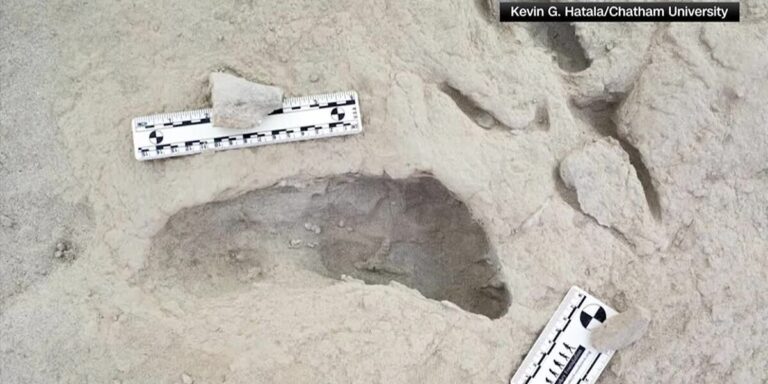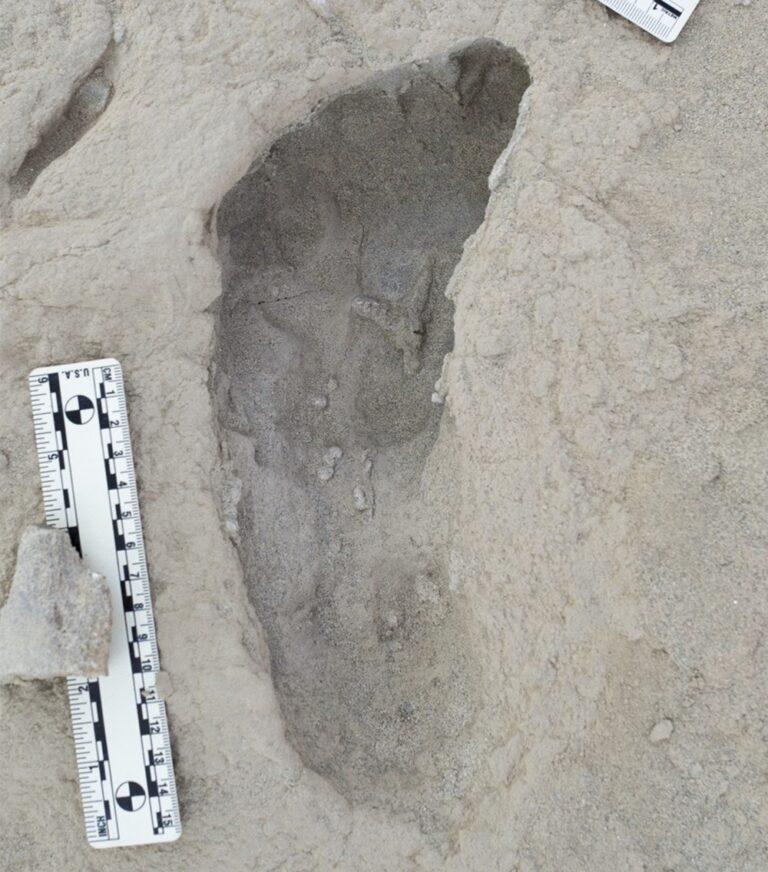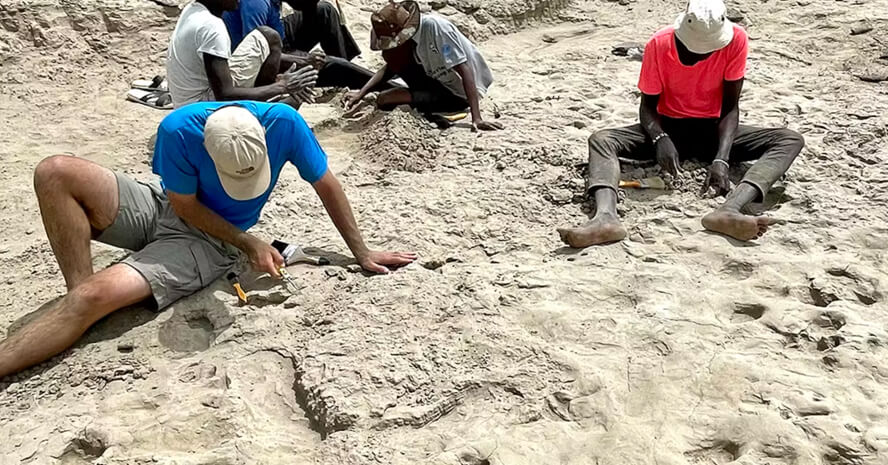A remarkable discovery has stunned scientists and historians alike—fossilized footprints found in Kenya in 2021 may challenge existing timelines of early human ancestor movement. The footprints, uncovered by researchers from Chatham University, Pennsylvania, have sparked a wave of curiosity, raising questions about their true origins and the creatures that left them behind. Were these tracks created by a previously unknown species? Do they suggest migration patterns we have yet to uncover? Or could they hint at something even more extraordinary about Earth’s distant past?

Unraveling the Mystery of the Fossilized Tracks
The prints were discovered in Kenya’s Turkana Basin, within a prehistoric layer of rock that has been dated to approximately 1.5 million years ago. This makes them among the oldest known fossilized footprints, providing direct evidence of hominin activity during that period. The analysis of the footprints, first reported by Chatham University researchers in 2024, suggests that the footprints provide direct evidence that Homo erectus and Paranthropus boisei coexisted in the same environment around 1.5 million years ago. This coexistence had been hypothesized based on fossil evidence, but the footprints offer tangible proof of their simultaneous presence.

Paranthropus boisei (Credit: Sci.News)
The findings were published in the journal Science on November 28, 2024. The research was conducted by an international team including Keynan researchers, scientists from Chatham University, Rutgers University, and the Smithsonian Institution.
The specific site of the find, near Lake Turkana, contains rock formations that have preserved these prints in astonishing detail, offering a glimpse into this time period and its role as a habitat for early hominin species.
The significance of the footprints lies not in suggesting earlier migrations but in providing concrete evidence of the behavioral patterns and locomotion of these hominin species. The discovery offers insights into how these species interacted with their environment and each other. But with every groundbreaking discovery, skepticism and alternative explanations arise, fueling a larger debate about how much of history remains hidden beneath the surface of the Earth.
Scientific Debate and Possible Explanations
Experts are considering a variety of interpretations for the footprints:
- Ancient Human or Animal Activity? If the dating is correct, these tracks could represent early human ancestors moving across a terrain that was once dramatically different from today’s environment. This would mean our current understanding of evolutionary timelines needs serious revision.
- Prehistoric Hominins? Some scientists propose that these footprints were made by species such as Homo erectus and Paranthropus boisei. If confirmed, it would support the theory that human ancestors transitioned to land earlier than previously thought, altering how we understand evolutionary biology.
- Geological Anomaly? Skeptics argue that the footprints could be an example of pseudofossils—naturally occurring formations that resemble biological prints. Detailed analysis, including microscopic examinations and chemical testing, is required to confirm whether these tracks truly belong to a biological entity or are the result of unique geological processes.
Implications for Our Understanding of History
If these footprints do belong to undiscovered species or represent an earlier timeline for terrestrial hominins, the implications could be profound. It would suggest that land-based ecosystems were developing at a time when much of the planet was dominated by primitive marine life. This raises questions about what other fossil evidence remains undiscovered, buried beneath layers of rock and time.
Moreover, discoveries like these challenge the very nature of historical certainty. Much of what we “know” about Earth’s past is pieced together from fossil evidence, but each new discovery has the potential to rewrite entire chapters of our evolutionary narrative. If ancient creatures were walking the Earth far earlier than we assumed, what else might we have overlooked?

Conclusion
While more research is needed to determine the exact origins of these footprints, one thing is clear: history is far from settled. Each new find forces us to reconsider what we thought we knew, proving that the story of Earth and its inhabitants is still being written—one fossil at a time.




